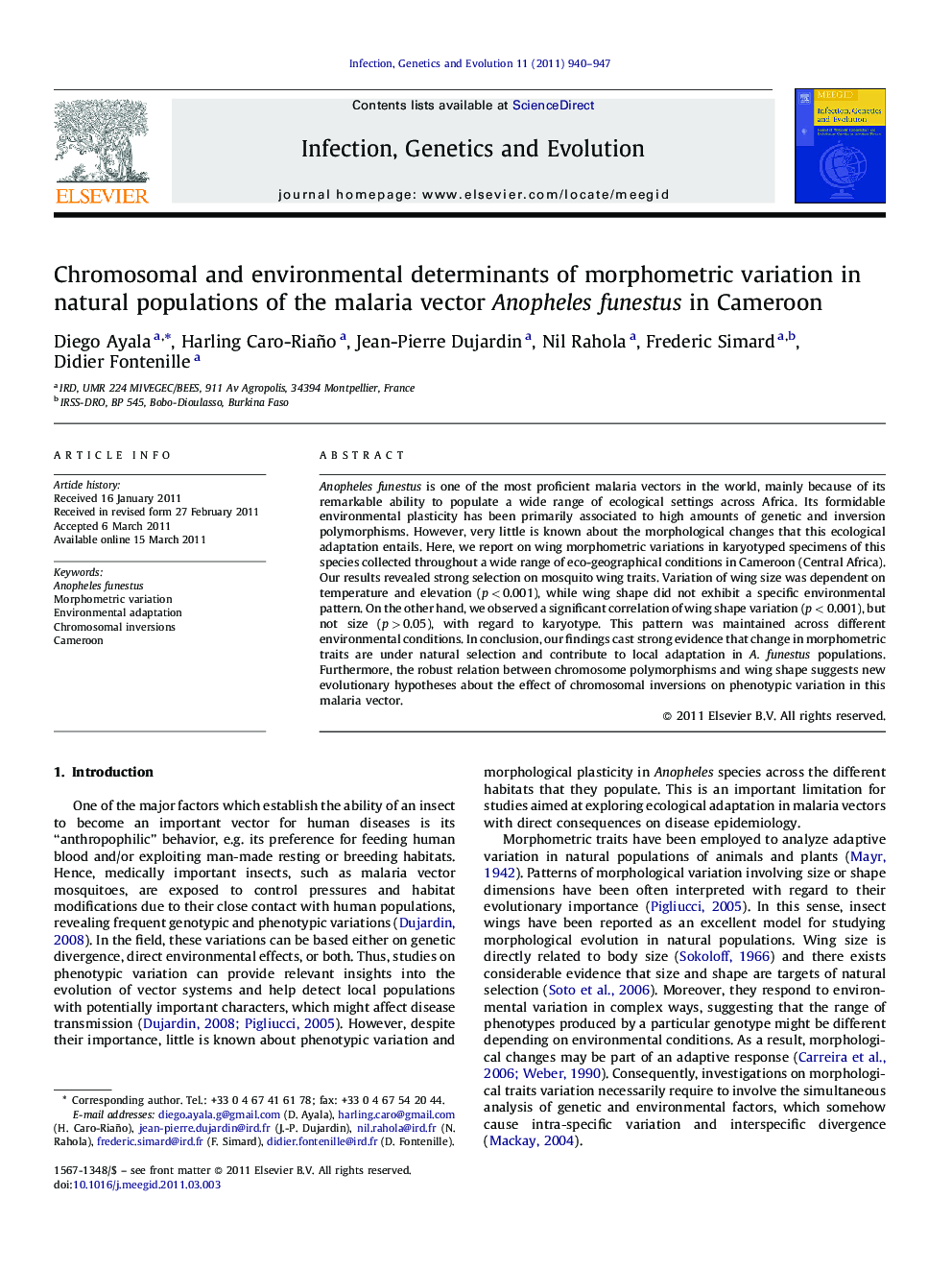| Article ID | Journal | Published Year | Pages | File Type |
|---|---|---|---|---|
| 2823112 | Infection, Genetics and Evolution | 2011 | 8 Pages |
Anopheles funestus is one of the most proficient malaria vectors in the world, mainly because of its remarkable ability to populate a wide range of ecological settings across Africa. Its formidable environmental plasticity has been primarily associated to high amounts of genetic and inversion polymorphisms. However, very little is known about the morphological changes that this ecological adaptation entails. Here, we report on wing morphometric variations in karyotyped specimens of this species collected throughout a wide range of eco-geographical conditions in Cameroon (Central Africa). Our results revealed strong selection on mosquito wing traits. Variation of wing size was dependent on temperature and elevation (p < 0.001), while wing shape did not exhibit a specific environmental pattern. On the other hand, we observed a significant correlation of wing shape variation (p < 0.001), but not size (p > 0.05), with regard to karyotype. This pattern was maintained across different environmental conditions. In conclusion, our findings cast strong evidence that change in morphometric traits are under natural selection and contribute to local adaptation in A. funestus populations. Furthermore, the robust relation between chromosome polymorphisms and wing shape suggests new evolutionary hypotheses about the effect of chromosomal inversions on phenotypic variation in this malaria vector.
► Wing morphology in A. funestus shows significant phenotypic variation across habitats. ► Wing size exhibits significant variation according to temperature and elevation. ► Wing shape morphology correlates with chromosomal polymorphisms.
